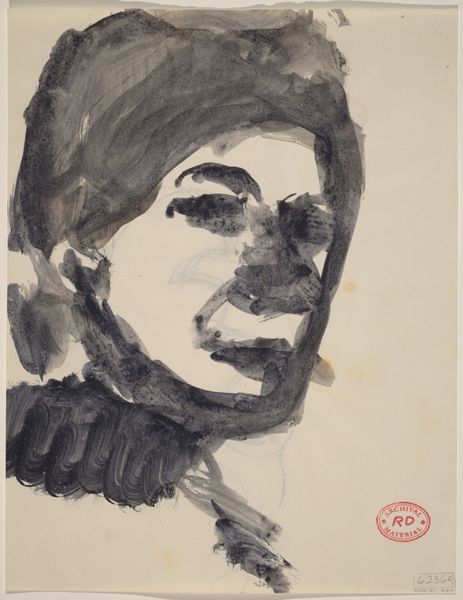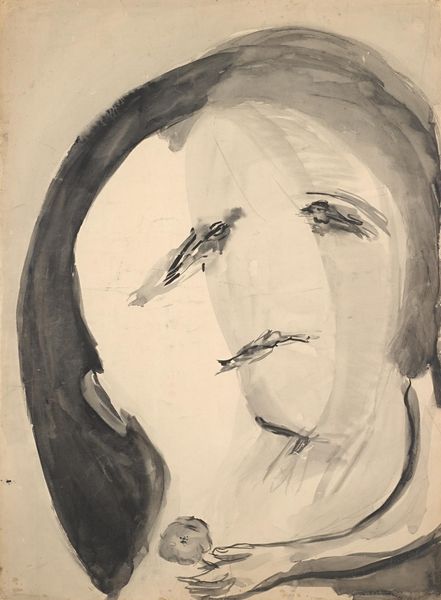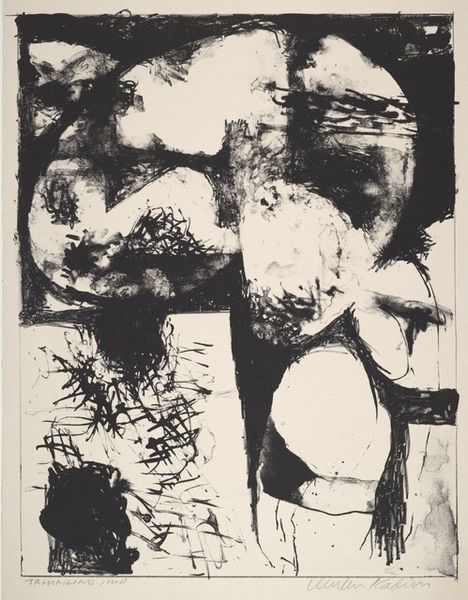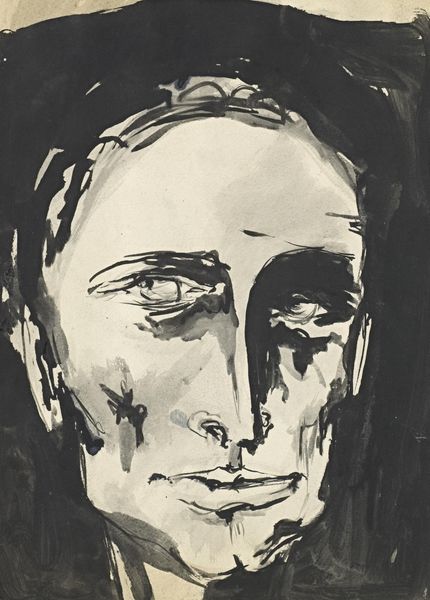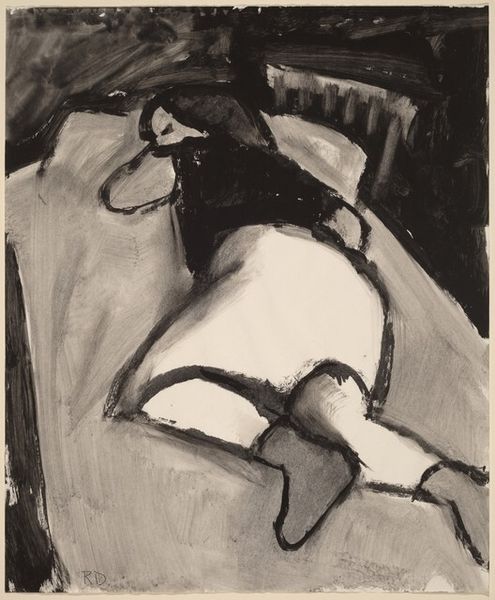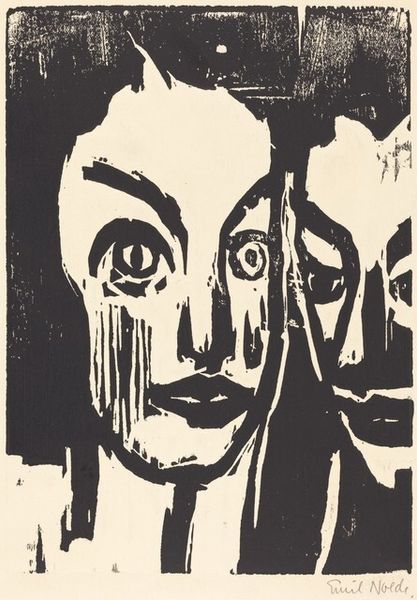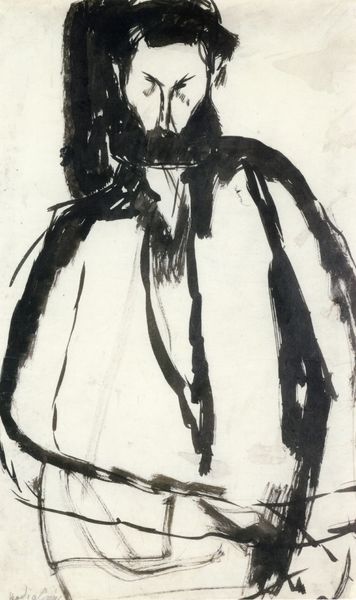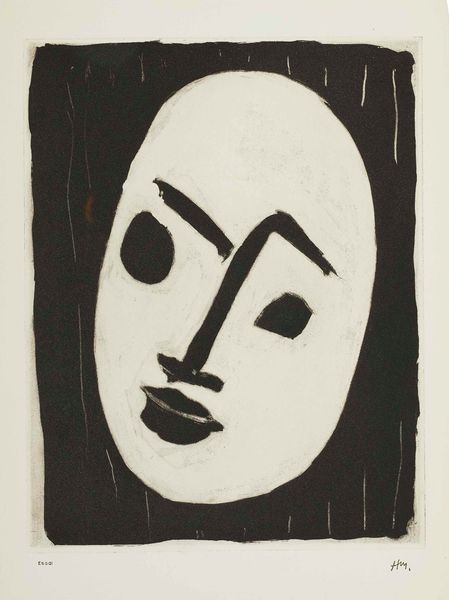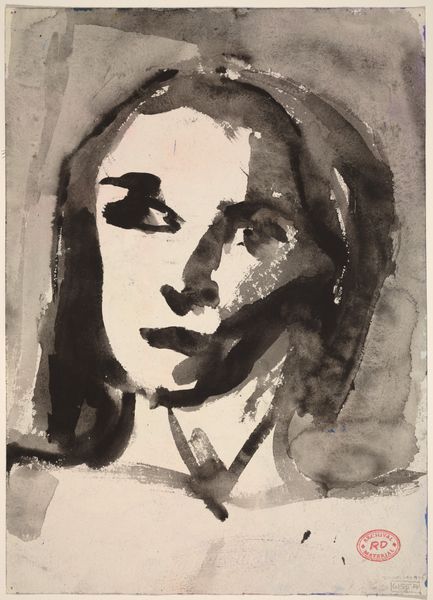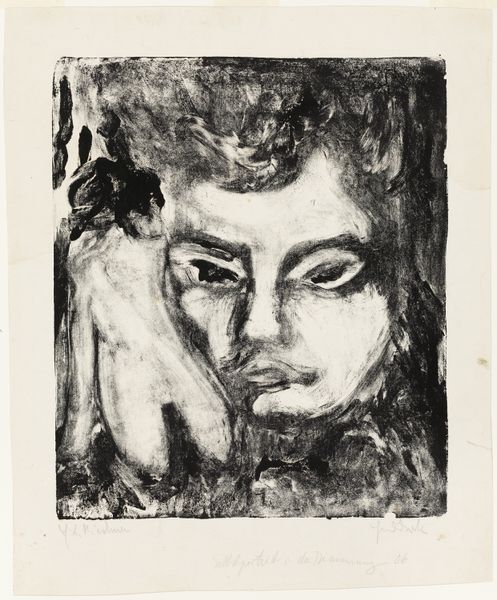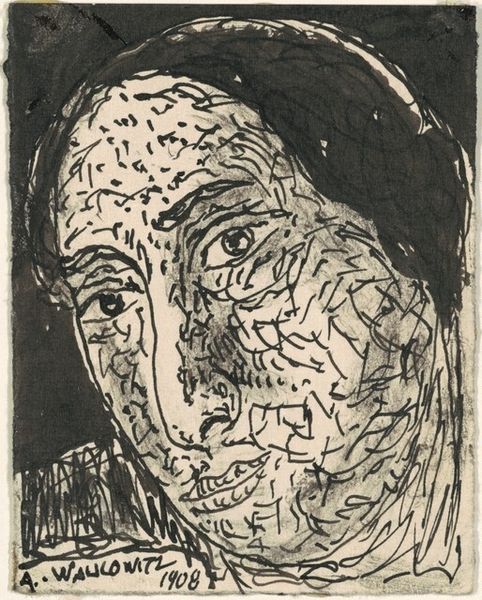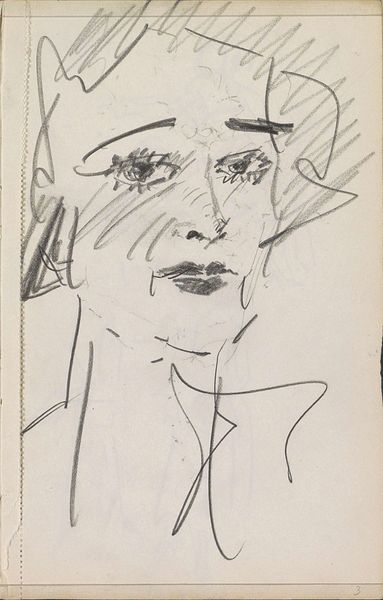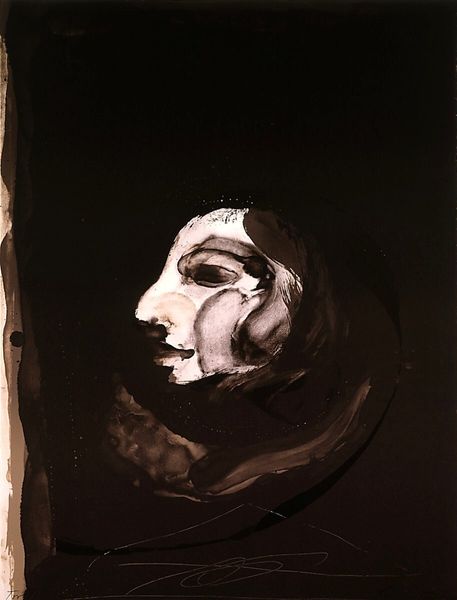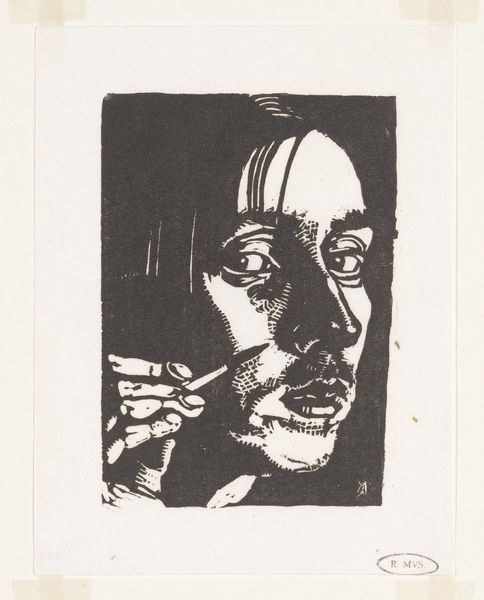
Dimensions: 37.2 x 26.9 cm
Copyright: Joy Hester,Fair Use
Curator: Looking at this ink drawing by Joy Hester, it immediately strikes me as intensely expressive. The face almost seems to emerge from the darkness. Editor: Absolutely, there's a raw quality to the application of ink. Considering it's dated 1948, one might investigate the availability, affordability, and established traditions of ink as a prevalent medium at the time. Were there particular ink manufacturers whose products influenced her practice? And what kind of paper? Its absorbency surely played a part in the final image. Curator: The portrait's direct gaze is arresting; Hester offers a profound connection between subject and viewer. We can consider expressionism as an approach, since we perceive not simply what is seen, but the distortion amplifies emotion. And what is hidden? Editor: Right, and it is interesting how societal views might influence that artistic choice. Museums are filled with representations of faces and individuals, but whose portraits are privileged, exhibited and promoted versus left out of institutionalized stories of art history? Curator: What resonates for me is the uninhibited confidence in those bold, sweeping ink strokes. How many other portrait works would it take, in this period, before someone chose to foreground so much abstraction and gestural movement? The materiality itself suggests that urgency in execution. Editor: We also see the cultural moment emerging: Australia's art scene following the second World War and modern art institutions and galleries still forming themselves in reaction. Hester operated outside of mainstream, traditional practice, helping create space for women artists in a scene heavily dominated by men. Curator: Agreed, thinking about that resistance, a clear sense of independent vision stands out. So raw and so emotional: it’s truly affecting! Editor: For me, it reminds us about whose faces art institutions valorize... and whose they erase. And more questions! Where did the NGV acquire it? Is its exhibition serving to further broaden and update this art historical canon? Food for thought.
Comments
No comments
Be the first to comment and join the conversation on the ultimate creative platform.
